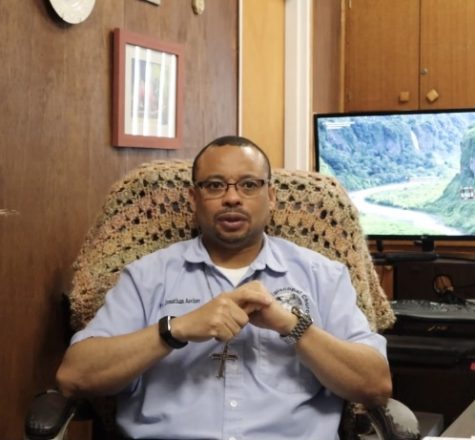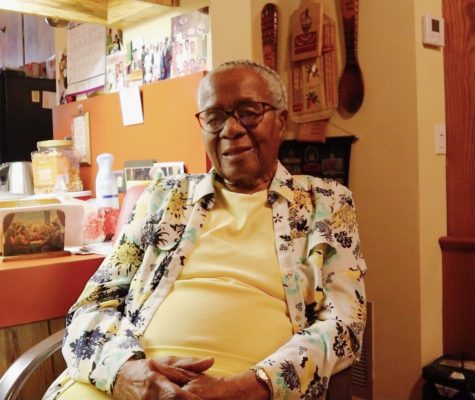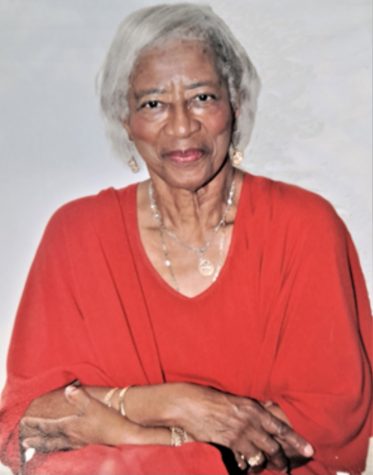
Leah Thorpe ‘22 is a copy editor and staff writer for The Catalyst. She specializes in features and opinion pieces.


The West Grove's front porches are portals into the the area's rich cultural history—a history now endangered by gentrification
October 28, 2021
My drive to and from school each day brings me through the neighborhood of West Coconut Grove. RE students commute from all parts of Miami, and like me, most have driven through the West Grove community or have parked on Franklin or Charles Avenues at some point. Many of us have little knowledge of our neighbors across the street and are curious to learn more.
I had heard about the Bahamian settlers who first built West Coconut Grove, but I knew little about their culture and history as a people. Driving through this community daily to school, my attention over the years was drawn to houses. In particular, I observed the older homes, some colorful and others white, with gabled roofs, wood siding and front porches sprinkled throughout the community. The porches were of interest to me. I noticed how some were bare, and others had planters for decoration and rocking chairs. I was interested in the idea that these porches reflected the culture of both the people who originally built them and the descendants who have used them over so many decades.
As a 2022 Dan Leslie Bowden Fellow, I was fortunate to have the opportunity to research the culture and humanity of West Coconut Grove through their architectural history. I considered how their porches reflected their community, a community which we must appreciate and honor as a school that shares this neighborhood. Appreciation of cultural differences leads to respect and compassion for others.
I learned that when the Bahamian settlers arrived in South Florida beginning in the late 1800s, they brought with them their style and techniques of building. The first white settlers that were in South Florida were skeptical about building on the rocky South Florida soil. The Bahamians had been building on similar terrain for years in the Bahamas, and they taught the white settlers how to use the local materials for building. George Merrick, founder of the City of Coral Gables as well as former president of the Historical Association of Southern Florida, wrote in 1941:
“I believe these Bahamians had a most distinct and important influence. They had built their homes in their own island of the coral rock, and they brought here their skill of masonry building. Today, some of the oldest buildings in Coconut Grove and Old Cutler are of the same construction which has been in use for over one hundred and fifty years in the Bahamas. Built without cement, with only native lime mortar, these houses have withstood countless hurricanes in the Bahamas.”
The Bahamian immigrants strongly influenced building at the time and inspired the white settlers. Frank Stirrup, one of the original Bahamian settlers, built many of the homes for his community. The style was the shotgun-style that came from the Bahamas and was believed to have originally come from West Africa. This style home can be found throughout the American South. The design of these homes was central to who they were as a people. As noted in the Charles Avenue Designation Report, “Their houses were constructed so that one doing chores inside could keep their eyes on children playing in the backyard and be aware of who was coming or going on the street.” All of the activities were outdoors with the community, with the house providing just shelter. The shotgun-style usually has three common features: a door at both ends, a front facing gabled roof, and a front porch.
Many variations of the shotgun house exist. The West Grove houses had front porches and were very close to one another on small lots with no setback from the street. Their porches were designed so that people on the street saw them as accessible; porches are most often used when people feel comfortable in the space. Like their Bahamian counterparts, porches in the West Grove were usually raised, and their builders focused on adding details to the floors, columns, ceilings, and railings. Porches were designed to foster human relationships and build a stronger community.
This past summer, as part of my Bowden Fellowship project, I interviewed direct descendants of original Bahamian settlers to hear their personal recollections of how their houses and neighborhoods impacted them. These interviews were more impactful than I could ever have imagined. I appreciate my interviewees opening up their world to me.

Reverend Jonathan Archer from Coconut Grove’s Christ Episcopal Church shared what it was like to grow up in Nassau, Bahamas. He talked of his grandfather’s front porch and how he would play “red light, green light” and learn life’s lessons out there. He described how their rite of passage was falling off of his grandfather’s porch into the rose bushes.
“For us growing up as kids there was always this wonderful time that we spent on the porch,” he said. “I think that the porch itself and these experiences helped to shape us and bind us together as a family and helped us to be the people that we are today.”
For ninety-four-year-old Mrs. Thelma Gibson, who lives in a colorful house on Franklin Avenue close to where she grew up, the West Grove offered a similar experience. She was born in 1926, and she recalled a childhood in which the architecture of homes reflected both the closeness of the community and their identity as a people.
“We played together, all the children pretty much knew each other, especially those of us on Charles Avenue. We could jump rope in the streets and climb trees. We had to go down the street saying ‘good morning’ to everyone and call them by their name,” Mrs. Gibson said.

She also shared her thoughts on the modern homes being built by developers scattered throughout her community, which have left few original homes remaining. “My grandson lives in the big box next door. So much has changed. At the time [around 2000, when plans for some of these developments were first proposed] nobody realized what the developers had in mind, so gentrification has taken over.” Mrs. Gibson worries that Coconut Grove’s history will soon be forgotten because of the new modern homes replacing original homes like the one she grew up in.
Mrs. Leona Baker lives in the Golden Gates community next to Carver Elementary School. She recalled her front porch as a place where the neighborhood would gather. “We would get together, come and sit and talk on the porch about all the troubles of the world: having to work for little or nothing, raising the children, and aspirations for the children, which were to have a better life than we had.”

She said she used to spend a lot of time playing in the yard, sitting on the front porch, and reading books. The neighborhood felt very connected, with kids playing outside all the time.
But she echoed Mrs. Gibson’s feeling that things have drastically changed. She said she wishes that “instead of the big boxes being built all around, I would like more houses that were replaced to look like what we used to have in the Grove.”
Exploring the architecture of our neighbors in the West Grove made me realize how important it is to keep their history alive. If we lose touch with our communities, we lose out on the knowledge and experiences of people, like Mrs. Gibson, Mrs. Baker, and Reverend Archer, whose wisdom could change our lives for the better. We also lose a larger sense of community, and receive an underlying message that only certain people, traditions and values are important. By understanding and celebrating different cultures, we can grow in perspective, respect, empathy and compassion, which opens us up to a more fulfilling and dynamic life.

Leah Thorpe ‘22 is a copy editor and staff writer for The Catalyst. She specializes in features and opinion pieces.